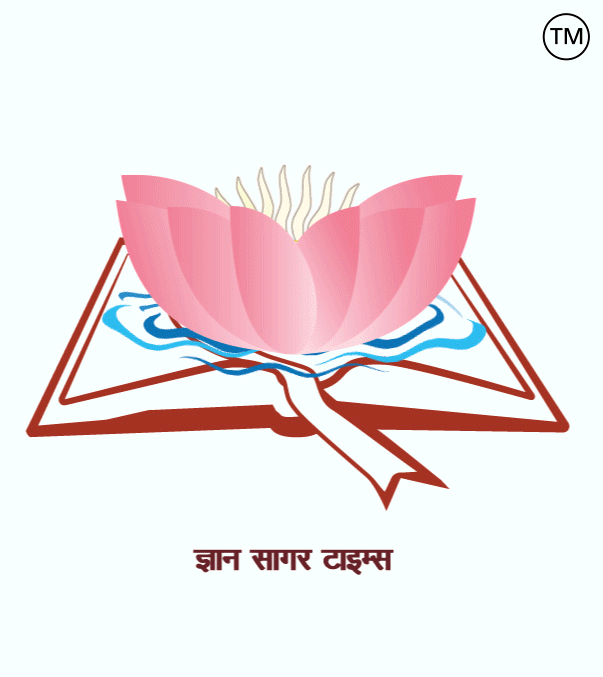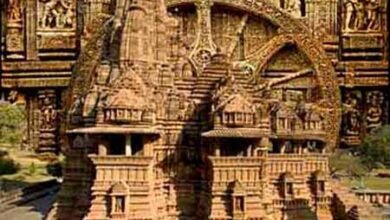
Related to economics -191.
|
1. Who designed the form of which five-year plan? = P. C. Mahalanobis. 2. In which five-year plan was the zero-based budget system implemented in India? = In the Seventh Five-Year Plan. 3. What was the duration of the Sixth Five-Year Plan? = The Year 1980-85. 4. During which five-year plan was the ‘Standard Person Year’ adopted to measure employment? = Fifth Five-Year Plan (1974–1978). 5. What was the duration of the Seventh Five-Year Plan? = The Year 1985-90. 6. What was the major objective of the Seventh Plan? = To establish growth in the areas of economic productivity, an increase in food production and employment generation through social justice. 7. What was the duration of the eighth five-year plan? = The Year 1992-97. 8. When was the Eighth Five-Year Plan first implemented? = The Year 1990. 9. What was the period of the Ninth Five-Year Plan? = The Year 1997-2002. 10. What was the duration of the Tenth Five-Year Plan? = The Year 2002-2007. 11. What was the main objective of the Tenth Five-Year Plan? = Achieving 8% GDP growth per year. 12. What was the period of the 11th Five-Year Plan? = The Year 2007-2012. 13. What was the period of the 12th Five-Year Plan? = The Year 2012-2017. 14. What is the period of the 13th Five-Year Plan? = The Year 2016-2020. 15. Which five-year plan of India ended prematurely? = Fifth Five-Year Plan. 16. Which government had finished the sixth plan introduced by the Janata Party government ahead of time? = Congress Government. 17. Which government declared the Fifth Five-Year Plan to be over a year ahead of time? = Janata Party Government. 18. What was the name given to the Sixth Five-Year Plan introduced by the Janata Party Government? = Rolling Plan. 19. What was the period of the Sixth Five-Year Plan implemented by the Congress Government? = Began on 1 April 1980 and ended on 31 March 1985. 20. In the Sixth Five-Year Plan, what special emphasis was given? = marked the beginning of economic liberalization. 21. In which scheme, programs related to rural unemployment eradication, IRDP, NREP, TRYSEM, DWACRA, RLEGP were implemented? = VI. 22. Which plan is described as a liberalized economy ‘John W. Muller was based on the model? = Eighth Five-Year Plan. 23. In which scheme was ‘Human Resource Development’ considered as the fundamental objective? = Eighth Five-Year Plan. 24. In which five-year plan were steel plants, integral coach factories and Chittaranjan locomotives established? = Second Five-Year Plan. 25. When did the Green Revolution begin in agriculture? = Year 1966-67 (during plan holidays). 26. In which year were 14 banks nationalized? = 19 July 1969. 27. Nationalization of 14 banks, the MRTP Act and the assumption of buffer stock came into force during which scheme? = Fourth plan. 28. Under which five-year plan was the Green Revolution born? = Third Five-Year Plan. 29. In which five-year plan was the slogan of ‘Garibi Hatao’ first given? = Fifth plan. 30. Which government implemented the notion of decentralized planning in the country? = It was implemented by the Kerala government in the year 1996. 31. When was the Grain for Work program launched? = 14 November 2004. 32. What is another name for the ‘Sabla’ scheme? = Rajiv Gandhi Adolescent Girl Empowerment Scheme. 33. Which program was launched for the employment of landless farmers and laborers? = Rural Landless Employment Guarantee Programme(RLEGP). 34. Which decade is considered the most successful in terms of agricultural production? = The Year 1980. 35. What was the main objective of the Eleventh Five-Year Plan? = Eliminate poverty, provide employment opportunities, promote education and health care, and increase agricultural productivity.
============= ============= === ======== अर्थशास्त्र से संबंधित-191.
1. किस पंचवर्षीय योजना का स्वरूप किसने तैयार किया था? = पी. सी. महालनोबिस. 2. भारत में शून्य आधारित बजट प्रणाली किस पंचवर्षीय योजना में लागू हुई थी? =सातवीं पंचवर्षीय योजना में. 3. छठी पंचवर्षीय योजना की अवधि क्या थी? = वर्ष 1980-85. 4. किस पंचवर्षीय योजना के दौरान रोजगार मापने के लिए ‘मानक व्यक्ति वर्ष’ को अपनाया गया? = पांचवीं पंचवर्षीय योजना (1974-1978). 5. सातवीं पंचवर्षीय योजना की अवधि क्या थी? = वर्ष 1985-90. 6. सातवीं योजना का प्रमुख उद्देश्य क्या था? = सामाजिक न्याय के माध्यम से आर्थिक उत्पादकता, खाद्यान्न उत्पादन में वृद्धि और रोजगार सृजन के क्षेत्रों में विकास स्थापित करना था. 7. आठवीं पंचवर्षीय योजना की अवधि क्या थी? = वर्ष 1992-97. 8. आठवीं पंचवर्षीय योजना पहले कब से लागू होनी थी? = वर्ष 1990. 9. नवीं पंचवर्षीय योजना की अवधि क्या थी? = वर्ष 1997-2002. 10. दसवीं पंचवर्षीय योजना की अवधि क्या थी? = वर्ष 2002-2007. 11. दसवीं पंचवर्षीय योजना का मुख्य उद्देश्य क्या था? = प्रति वर्ष 8% सकल घरेलू उत्पाद वृद्धि प्राप्त करना. 12. 11वीं पंचवर्षीय योजना की अवधि क्या थी? = वर्ष 2007-2012. 13. 12 वीं पंचवर्षीय योजना की अवधि क्या थी? = वर्ष 2012-2017. 14. 13 वीं पंचवर्षीय योजना की अवधि क्या है? = वर्ष 2016-2020. 15. भारत की कौन-सी पंचवर्षीय योजना समय से पहले समाप्त हो गई थी? = पांचवीं पंचवर्षीय योजना. 16. किस सरकार ने जनता पार्टी सरकार द्वारा पेश छठी योजना को समय से पहले ही समाप्त कर दिया था? = कांग्रेस सरकार. 17. किस सरकार ने पाँचवीं पंचवर्षीय योजना को समय से एक वर्ष पहले ही समाप्त घोषित कर दिया था? = जनता पार्टी सरकार. 18. जनता पार्टी सरकार द्वारा पेश छठी पंचवर्षीय योजना को क्या नाम दिया गया था? = अनवरत योजना (Rolling Plan). 19. कांग्रेस सरकार द्वारा लागू छठी पंचवर्षीय योजना की अवधि क्या थी? = 1 अप्रैल 1980 से शुरू हुई और 31 मार्च 1985 को समाप्त हुई. 20. छठी पंचवर्षीय योजना में किस पर विशेष बल दिया गया? = आर्थिक उदारीकरण की शुरुआत को चिह्नित किया. 21. किस योजना में ग्रामीण बेरोजगारी उन्मूलन से संबंधित कार्यक्रम IRDP, NREP,TRYSEM, DWACRA, RLEGP लागू किए गए? = छठी. 22. कौन-सी योजना उदारीकृत अर्थव्यवस्था के रूप में वर्णित ‘जॉन डब्ल्यू. मुलर’ मॉडल पर आधारित थी? = आठवीं पंचवर्षीय योजना. 23. किस योजना में मानव संसाधन विकास’ को मूलभूत उद्देश्य माना गया था? = आठवीं पंचवर्षीय योजना. 24. किस पंचवर्षीय योजना में इस्पात संयंत्रों, इंटीग्रल कोच फैक्टरी तथा चितरंजन लोकोमोटिव्स की स्थापना हुई थी? = द्वितीय पंचवर्षीय योजना. 25. कृषि क्षेत्र में हरित क्रांति का आरंभ कब हुआ? = वर्ष 1966-67 (योजनावकाश के दौरान). 26. 14 बैंकों को राष्ट्रीयकरण किस वर्ष किया गया था? = 19 जुलाई 1969. 27. 14 बैंकों का राष्ट्रीयकरण, एमआरटीपी अधिनियम तथा बफर स्टॉक की धारणा किस योजना के दौरान लागू हुई? = चौथी योजना. 28. किस पंचवर्षीय योजना के अंतर्गत हरित क्रांति का जन्म हुआ था? = तीसरी पंचवर्षीय योजना. 29. सर्वप्रथम किस पंचवर्षीय योजना में ‘गरीबी हटाओ’ का नारा दिया गया था? = पाँचवीं योजना. 30. किस सरकार ने देश में विकेंद्रित नियोजन की धारणा को लागू किया? = वर्ष 1996 में केरल सरकार द्वारा लागू किया गया था. 31. काम के बदले अनाज कार्यक्रम का शुभारंभ कब हुआ था? = 14 नवम्बर 2004. 32. ‘सबला’ योजना का दूसरा नाम क्या है? = राजीव गांधी किशोरी सशक्तिकरण योजना. 33. भूमिहीन कृषकों तथा श्रमिकों के रोजगार हेतु कौन-सा कार्यक्रम चलाया गया था? = ग्रामीण भूमिहीन रोजगार गारंटी कार्यक्रम (आरएलईजीपी). 34. कौन-सा योजना काल दशक कृषि उत्पादन की दृष्टि से सबसे अधिक सफल माना जाता है? = वर्ष 1980 के दशक का. 35. ग्यारहवीं पंचवर्षीय योजना का मुख्य उद्देश्य क्या था? = गरीबी उन्मूलन, रोजगार के अवसर प्रदान करना, शिक्षा और स्वास्थ्य सेवा को बढ़ावा देना और कृषि उत्पादकता में वृद्धि करना है.
|






